Clean Danube | Shining A Spotlight: Epic Swim Highlights the Beauty and Pollution in Europe’s Second-longest River

The Danube River is a border. It's a link that connects 10 countries, tying Vienna to Bratislava, Budapest, and Belgrade like a string of capital-city pearls.
Europe's second-longest river is a bustling thoroughfare for shipping and a tranquil refuge for summer holidays. It's a muscular source of power and a haven for fish, birds, and amphibians.
It is also the conduit for four metric tons of microplastics a day that wash into the Black Sea. Just ask Andreas Fath, "the Swimming Professor" of Germany's Furtwangen University, who swam all its 2,700 kilometers (1,678 miles) in a monumental 57-day journey to raise awareness of pollution in the Danube.
As he swam, Fath attracted quite a parade in his wake. First in line was his support crew. The team included Edgar, the captain of the MS Marbach that served as a floating home base and research vessel; logistician/publicist Mario Kümmel of the Association for Wildlife Protection; graduate students Tim Kiefer and Felix Broghammer, who sampled water quality all along the way; filmmaker Shane McMillan; and Sarah Regier and Lukas Seubert, students from Berlin who conducted educational workshops nearly any time Fath stepped on shore.
Along the route, swimmers, kayakers, and boaters also joined Fath for sections of his journey. On shore, reporters, dignitaries, fans, and hundreds of children greeted his arrival at stops along the way.
Tools of the Trade
From the start of the swim in Germany's Black Forest to the river's mouth at the Black Sea, Fath and his team faithfully sampled the Danube's waters. Kiefer and Broghammer used three different filtration methods to capture microplastic particles along the route to analyze with an infrared spectrometer. They used a WTW MultiSet 3630 to take daily measurements of temperature, turbidity, pH, conductivity, and dissolved oxygen (DO). Fath also wore passive sampling membranes on his legs to pick up persistent organic pollutants along his travels.
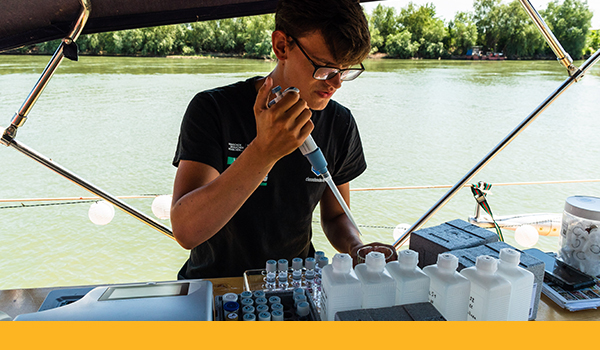
Daily water quality measurements provided a steady stream of data.
And just as important as the sampling instruments in the water, Fath also made skillful use of the most important tool on dry land: the microphone.
"We used our media presence to talk to people, to talk to politicians," Fath says.
In addition to meeting with the ministers of the environment of both Slovakia and Austria, he shared the spotlight with local non-governmental organizations (NGOs) in the countries he visited.
"They are visible now—more visible than before—because of the CleanDanube project," Fath points out. "The media came and I did interviews, but the NGO leaders did interviews, too, along with us. It's a multiplication effect."

Fath notes that the biggest media splash occurred in Belgrade, where he refused to swim a murky, brown 15-km (9.3-mi) reach where the city dumps raw sewage into the river. The plummeting DO levels in the water running through Belgrade were dramatic to see. But so was the attention CleanDanube focused on local clean water activists.
"That was amazing—the biggest media response we had, ever," he says. "Every day, I got phone calls from journalists. The NGOs and activists there had a lot more power to talk than before."
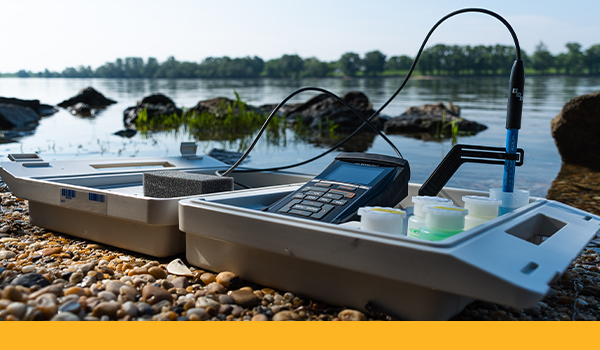
The WTW MultiSet 3630 was used to measure temperature, turbidity, pH, conductivity, and dissolved oxygen (DO).
Educational Workshops
After the interviews, Fath and his team also made countless one-on-one connections through portable educational displays and hands-on activities.

One of Fath's most urgent messages is that pollution in the world's rivers, including the Danube, is likely to increase.
"As the climate changes, we have strong rainfalls. With these strong rainfalls, everything around us is released into the water," he explains. Evidence of the roaring flood of pollutants becomes clear when floodwaters recede.
"There is no place where I left the water without litter around me—bottles and bags," he says. In most reaches of the river, microplastic particles outnumbered aquatic organisms.
Still, says Fath, "you can see only the tip of the iceberg. The rest of the plastic pollution is delivered to the sea. Nine million [metric] tons every year are released to our oceans. Rivers are the deliverers of pollution."
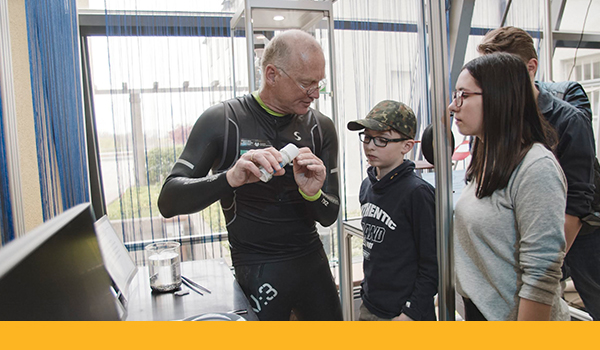
Outreach and hands-on teaching were important goals of the CleanDanube swim. Fath and his support team met students and adults all along the route.
Journey Down The Danube - Key Places and Dates
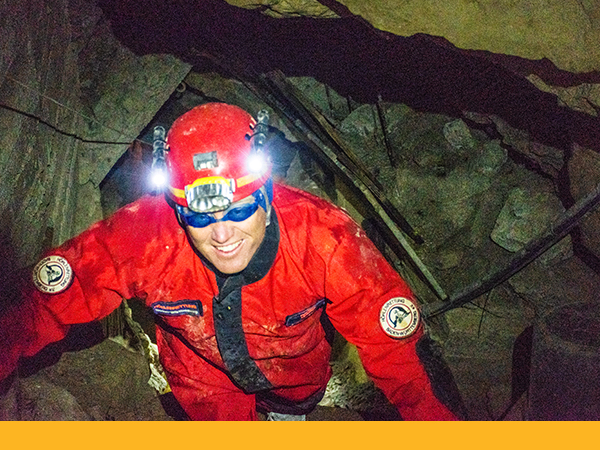
Aachhöhle (The Aach Cave), Germany | April 20, 2022
On April 19, 2022, Fath started his Danube swim in a neoprene suit to protect him from the chill of 9.5°C (49°F) water. The Danube drops almost immediately underground into a network of limestone caves in Germany's Black Forest. The next day, Fath squeezed through underground passages 85 meters below ground to swim in the subterranean river—nicknamed the Black Danube—before it reemerged to feed Lake Constance.

Bratislava, Slovakia | May 8, 2022
Aided by a brisk current, Fath cruised toward the Slovakian capital—with its medieval city center on one bank and Cold War-era apartment blocks on the other—at 12.5 km/hour (7.8 mph). In Slovakia's capital, Fath met Jan Budaj, the nation's Minister of the Environment.

Pécs, Hungary | May 16, 2022
A 2-km (1.2-mi) stretch of the river near Hungary's nuclear power plant was covered in white foam. Fath boarded the MS Marbach, CleanDanube's floating supply center, sleeping quarters, and research vessel, to traverse the foamy stretch.

Budapest, Hungary | May 14, 2022
On April 19, 2022, Fath started his Danube swim in a neoprene suit to protect him from the chill of 9.5 °C (49 °F) water. The Danube drops almost immediately underground into a network of limestone caves in Germany's Black Forest. The next day, Fath squeezed through underground passages 85 meters below ground to swim in the subterranean river—nicknamed the Black Danube—before it reemerged to feed Lake Constance.

Belgrade, Serbia | May 25, 2022
The capital city, with 1.7 million residents, does not treat its wastewater before releasing it into the Danube. Fath refused to swim the 15-km (9.3-mi) stretch of brown water through Belgrade. Journalists swarmed the story, generating great attention to the pollution problem.

Cernavoda, Romania | June 10, 2022
Romanian swimming legend Avram Iancu, who swam the Danube without a wetsuit in 89 days in 2017, drove 600 km (373 mi) to join Fath for a leg of the CleanDanube journey.
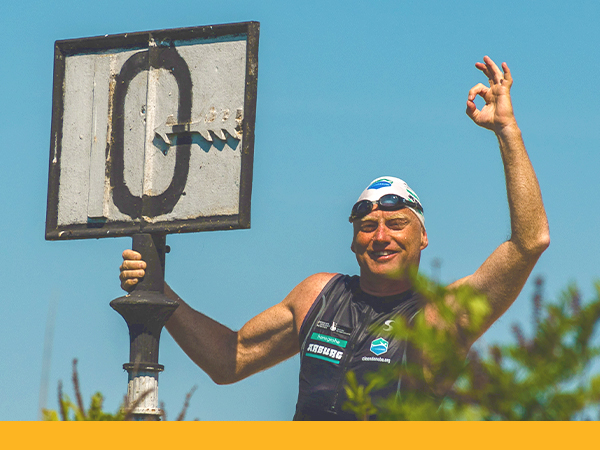
Sulina, Romania | June 17, 2022
Dwarfed by massive ships pushed into the Danube channel to avoid the battles a few kilometers up the coast in the Ukrainian port of Odesa, Fath swims to the junction of the Danube and the Black Sea. He climbs out of the water to pose beside the zero marker at the river's mouth.
Meet Andreas Fath, “The Swimming Professor”
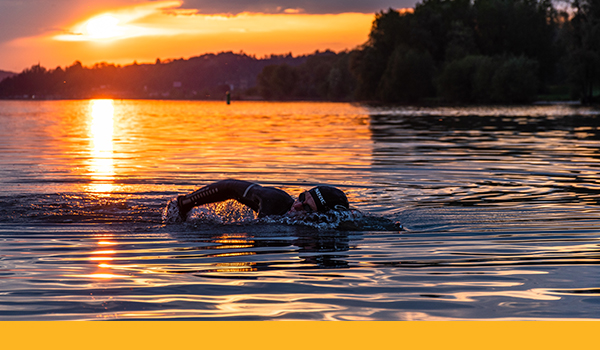
It's never been unusual to find Andreas Fath in the water. Fath has been competing in the swim lanes since 1973, and has held state records, German national university titles, and master's crowns over the years. When he's not swimming, he's likely to be paddling, diving, or surfing—or, when the water is below the freezing point, skiing or snowboarding.
The 57-year-old chemist has also found a unique way to combine his passion for swimming with his commitment to battling pollution in the world's rivers. In 2014, he swam the entire length of the Rhine in 28 days. Along the way, he sampled water quality and generated publicity about pollution, including the microplastics he found at the very start of the river in the alpine snowfields of Switzerland.
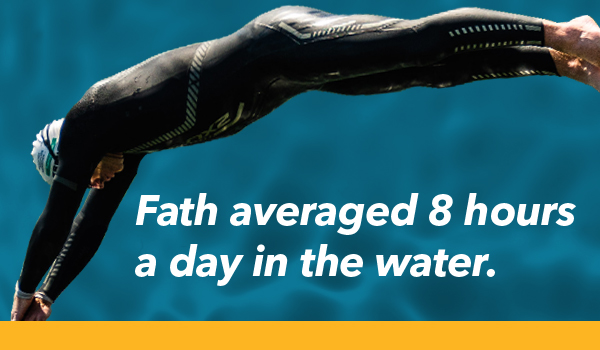
"Even at 2,340 meters, you find microplastics," Fath notes. "Nobody lives there. There is no industry, no cars. You're in the middle of nowhere. It was a shock."
It takes a lot to surprise Fath when it comes to microplastics. For two decades as an industrial chemist, he specialized in developing novel metallic and plastic compounds, and became an expert in microelements. Since joining the faculty of Germany's Furtwangen University in 2011, Fath has taught a range of courses that include chemical process engineering and environmental chemistry.
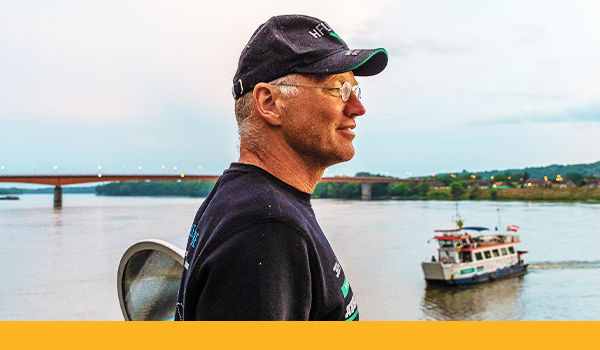
Fath watches the MS Marbach approach the dock near Budapest. His swim was closely supported by a team of seven professionals who handled everything from publicity to education, water sampling, safety, and logistics.
A call from an American professor about his Rhine data resulted in a friendship and a 34-day swim down the Tennessee River in 2017. By then, Fath was experienced with the PR machine. He and his friend Martin Knoll of Sewanee University used the swim to inspire cleanups and anti-pollution legislation in the American South.
"The Swimming Professor" now has three river journeys under the belt of his swim trunks. Each swim is impressive enough as a feat of endurance and strength. But they are even more impressive in the passion and commitment they represent in the battle to improve water quality in the world's rivers and the oceans downstream.
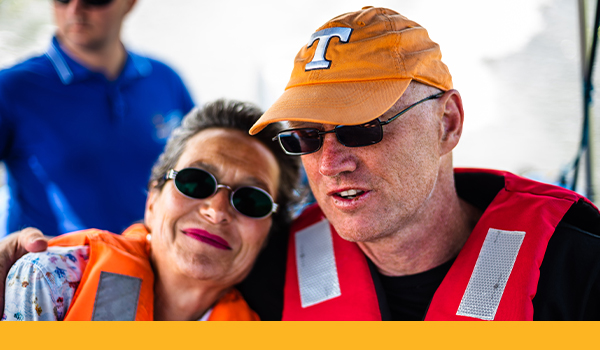
The end of his 2,700-km (1,678-mi) swim was just a few miles from the Ukrainian port city of Odesa. From the estuary, Fath was horrified to hear explosions from the Russian invasion. The experience inspired him to recall the 1987 accomplishments of Lynne Cox, a young British woman who swam a stretch of the Bering Sea between US-owned Little Diomede Island and the Soviet Union's Big Diomede Island. Her journey was toasted a few months later by US President Ronald Reagan and Soviet Premier Mikhail Gorbachev during their famous nuclear weapons summit. Fath says he would have swum the Black Sea if it could have inspired Vladimir Putin to stop the war. But even without a chance to halt a raging conflict, he reflected on how his efforts have brought water quality to the attention of millions of people.
"I thought about Lynne Cox, about how her epic swim could bring countries together in the Cold War, and what you can achieve with a swim sometimes," Fath says.
 Changing The Tide
Changing The Tide
Through his trips down the Danube, Rhine and Tennessee River, Fath has inspired cleanup efforts. For the past four years, people have joined in an international, one-day cleanup effort along the Rhine. Like Fath's swims, RhineCleanUp is a logistical feat and a labor of love on a grand scale.
On September 10, 2022, 40,000 people lined the Rhine and several of its tributaries to collect trash—300 metric tons of it. That day, 25 groups of residents along the Danube conducted a cleanup of their own. Fath is convinced that people who spend a day pulling trash out of their river are changed forever, more aware of where their garbage goes and unlikely to contribute to pollution.
That's how society changes. That's how rivers change.
"You can read the river and see what people use for medicine, how they treat their waste," Fath points out. "Rivers are a mirror of society."
